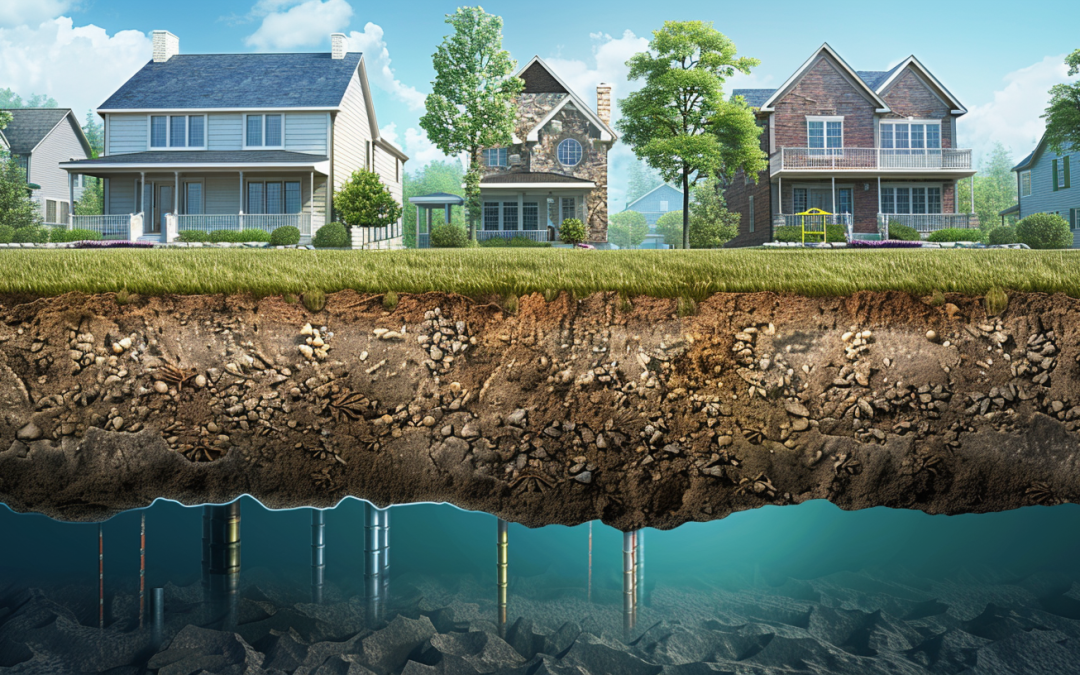There are many benefits to owning a private water well, but those benefits do come with a good deal of responsibility as well. When you drill into an aquifer below the ground, it is a lot like owning property that is connected to a river or water way. You own it, but you also have a responsibility to your neighbors and greater community downstream. When it comes to water wells in Oklahoma, there are some rules and regulations about their creation, use, and decommissioning that are important to be aware of. Here are some important issues to take note of as a landowner who owns or is considering installing a private water well.
Proper Construction & Licensed Professionals
Drilling and installing a new water well system is a large investment. You definitely want to utilize well established drillers who are properly licensed. In Oklahoma all Water Well Drillers and Service Technicians, Installers, and Operators are licensed through the Oklahoma Water Resource Board (OWRB). A properly licensed driller will ensure that your well casing is installed correctly in such a way to prevent your well from contamination by surface water.
System Maintenance & Equipment
As a private well owner, you are responsible for the upkeep of equipment that makes up your complete system. This might include filtration, but almost always involves a pressure tank, pressure switch, piping, electrical, and pump. Systems with a pressure tank should be evaluated at least once a year by a knowledgeable professional to ensure equipment is working within correct parameters. The life of your equipment can vary depending on its manufacturer and supporting infostructure and environment in the well. It is recommended financially to set aside funds each month to prepare for a complete system replacement. Knowing the age of your system, the quality of environment in the well, and the manufacture of the equipment can help a professional to advise you on when to expect a system to need new equipment.
Water Testing & Treatment
As a well owner, you are responsible for the safety of your drinking water. It is recommended by the Department of Environmental Quality (DEQ) that you test your water every year. A water test involves collecting a sample in a sanitary sample bottle and taking it into a DEQ testing laboratory. Results usually come back within 24 hours. The primary tests of concern for annual testing are total coliform and E-coli. For newly drilled wells, further tests may be recommended for things like heavy metals, water hardness, sulfates, nitrates and nitrites. Contact your local DEQ office for more information.
Following Public Safety Standards
Although your water source may be labeled “private”, it is important to understand that your well connects you to the same aquifer as your surrounding community. Thinking of it as an underground river of natural clean water and each well is a straw running into that clean water source. We are all responsible to make sure that our “private” wells are not contaminating the “public” water resource that is the ground water aquifer. There are some basic safety standards that help prevent contamination such as, making sure your well casing extends 12” above the surface of the ground. This is to prevent plant life, animals, and flowing water runoff from entering the well. Your well also needs a protective cap. Ideally, a watertight sanitary well cap, but at least a secure well cap properly sized for your casing. Keep plant growth trimmed around the well cap to prevent vines from making their way into the casing. You also want to make sure your system doesn’t leak back into the well. Each system should have at least one check valve down above the pump. If you notice air in your lines or see a loss in pressure, this could mean a malfunction in your check valve or a leak in pipe down hole. It is important to address those issues quickly so as to avoid allowing water from your system to re-enter the aquifer.
Plugging Abandoned Wells
Any time a well is no longer in use, it must be treated and protected the same as a functioning well until it can be plugged by a licensed professional. Abandoned wells can be a danger to people, animals, and children on the surface, but they are also a common contamination point for our ground water resource. If you want to maintain an old well as an option for future use, you must maintain it as if it is your water source and keep it clean and sealed while not in use. As soon as you have determined that a well is no longer viable for your water needs, it needs to be plugged. Decommissioning old wells is a very important element of protecting our ground water resource for future generations.

